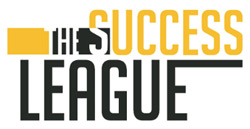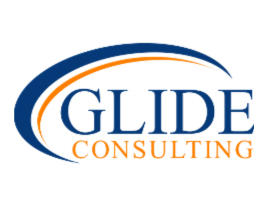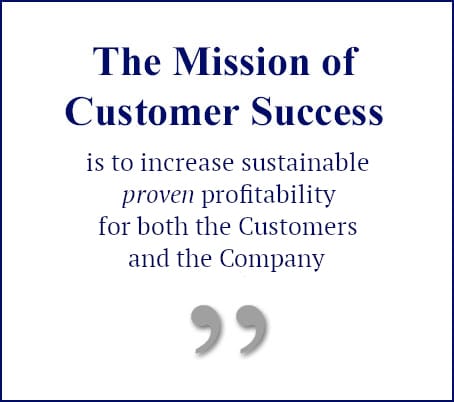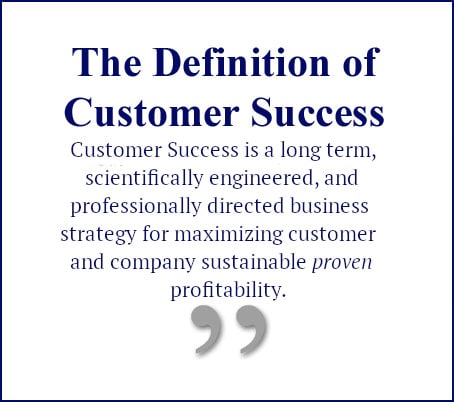Which software vendors are active in the Customer Success space?
These questions are constantly being asked by Customer Success teams and their companies worldwide. Two of the most popular pages on the Customer Success Association website are the Customer Success Technology Vendors List (CustomerSuccessSoftware.com) and the Customer Success Technologies Map (CustomerSuccessTechMap.com). The CSA site consistently gets over 100K new visitors each year.
The Elements of a Customer Success Technology Suite
 Customer Success teams have a wide number of integral functions that they must perform – and perform well in order to accomplish their mission. Just as with any other role in the company, the CS team needs appropriate technology to enable data collection, analysis and reporting as well as the management of the team itself. The following 12 categories make up the CS Technology Map: (The list of vendors offering products in each category is included in the Customer Success Technologies Map [CustomerSuccessTechMap.com]
Customer Success teams have a wide number of integral functions that they must perform – and perform well in order to accomplish their mission. Just as with any other role in the company, the CS team needs appropriate technology to enable data collection, analysis and reporting as well as the management of the team itself. The following 12 categories make up the CS Technology Map: (The list of vendors offering products in each category is included in the Customer Success Technologies Map [CustomerSuccessTechMap.com]
1. Customer Success Management Systems (CSMS) / Platforms
This is the basis for operating an effective Customer Success team. It enables the practitioner CSMs to stay on top of their assigned book of business and its related process/workflow. The CSMS also enables the Customer Success Executive to manage the team overall. There currently are 18 vendors offering what they describe as CSMS products. To be listed in this section with a link back to the vendor’s website, they must complete a separate application form that identifies which features and functionality their product provides.
2. Customer Relationship Management / Sales Force Automation:
In general, these systems maintain the Master Customer Record. Many of the CSMS products interface with the company’s CRM resource, but not all do so — some include CRM features within their own code.
3. Analytics / Business Intelligence:
Every Customer Success team needs to be able to look at its data in various ways, detecting and exploring trends. What was once called “Report Generators” has grown exponentially in scope and power, and is an indispensable tool.
4. Data Management Tools
Over time, the various departments of your company will collect enormous amounts of very valuable data. Having that data accessible to the Customer Success team is a core need. But it can’t be just any data. GIGO – Garbage In, Garbage Out – has been a known problem/challenge throughout the entire history of the high technology / computer era. And it’s as true today as it was at the beginning. Tools in this category help you to migrate, synchronize, clean, and verify your data so that it can be used for effective analysis and reporting.
5. Surveying Tools: CSAT / NPS / CES, etc.
Keeping a finger on the pulse of a company’s customer base is vital. There are various approaches to this function, including Net Promoter Score, Customer Satisfaction, Customer Effort Score, etc.
6. Onboarding Management Tools
Bringing a customer to go-live is a vital phase in the overall long-term relationship. In fact, a failed or badly executed onboarding project can end the relationship before it has a chance to begin. Beginning with implementation of the product, onboarding includes all elements of data migration, configuration and customization, and user training. Having the tools to effectively manage the project is a requirement. These vendors have developed products specifically intended for this purpose.
7. Customer Support Case Management Systems
Often also known as the Support Ticketing or Help Desk system, these tools enable Support agents to capture the details of problems and to search for known solutions to them.
8. Knowledge base / Wiki systems
Knowledge is of no value unless it can be found and effectively used by your team and by your customers. The advantage of recording knowledge is that it then can become the foundation for a one-to-many conversation, constantly available from everywhere. Tools in this category allow you to input, link, categorize, and index content from a wide variety of sources.
9. Collaboration / Online Discussion Groups
Online forums or discussion groups have a long, long history, and have been successfully (and very effectively) used across a wide range of audiences and subjects. They allow ongoing conversations from anywhere in the world that can be shared by an unlimited number of participants. The Customer Success Forum on LinkedIn, for example, began in 2009 with just 350 participants. Today, nearly 43,000 members — the largest gathering of Customer Success professionals anywhere — share expertise freely. Keep in mind though, that in order to be useful, they require moderation.
10. Communication Tools (In-app, Website chat, etc.)
It’s very common to arrive on a web page and immediately see a pop-up chat button or box that enables visitors to ask questions. Sometimes, these are automated — chat-bots, virtual assistants, etc., — but often a human is ready to take questions and to provide assistance. These resources can also be embedded within applications so that customers can use them to contact Support, Sales, Success, and/or other departments of the company.
11. Product Adoption / Management
For software companies, knowing which specific features of their application are actually being used, and to what degree, by their customers is vital. A customer whose usage of a module begins to plateau and then to recede may well be at risk of churning.
12. Project Management
Project Management tools assist participants and executives in effectively guiding a project through to completion. In the Customer Success space, project management tools would be especially necessary in onboarding and in customizations done by the professional services team. Some of the CSMS products include project management technology in their own code while others integrate with 3rd party applications — but it’s clear that every Customer Success group needs to have access to project management resources.
13. Learning Management
Any complex product will require the customer/user to make an investment in learning the product and its capabilities in order to reap the productivity and profitability advantages offered by the vendor. There are various forms that training can take — online, in-person classroom, self-guided / instructor-led, etc. — and there is a definite and increasing trend for the Training group to be located within the Customer Success organization. Therefore, an effective Learning Management System (LMS) is an important piece in most if not all Customer Success technology stacks so that the team can properly manage the students and the process of the learning.
14. Customer Nurturing Content / Marketing Automation
As customers become more aware of what your product can do, it’s vital to keep them moving further up the learning curve with “just-in-time” tips and other content. Marketing Automation tools were designed for this purpose. Prepared content can be delivered in response to various configurable triggers — by schedule, or when a user first begins using some particular features of the product, etc. By automating this delivery, the assigned customer success managers can focus on managing the process for their book of business rather than on creating and/or sending the content themselves.
15. Customer Advocacy / Testimonial Tools
Customers who are willing to serve as references for the quality of your products and company are strategically significant assets, and need to be managed accordingly. As with customer feedback, customer success managers are often the most likely people in your organization to know which customers are most suitable to be asked to be references. Social media activity is another key value. Your customer success technology suite should include the capability of tracking customer advocates and their effectiveness.
16. Website Analytics
Knowing who has visited your company’s website, and even more importantly, what they have read, is vital information for any company to have. Here at the Customer Success Association website, we analyze what visitors have read so that we can offer them more to encourage them to visit again. While ever-increasing privacy measures in browsers and use of Virtual Private Networks (VPN) make it harder and harder to identify specifically who has visited, knowing the patterns in the paths people take through your content is still very valuable.
17. Voice of The Customer – Customer Feedback tools
Customer feedback concerning enhancement requests and/or about their perception of your company’s products, or company overall often can be transmitted in various ways. Regardless of the communication channel used, it’s vital that the feedback be captured, recorded and made readily available throughout your organization. Customer success managers have a key role to play in this area as they are the most likely people to gather the feedback, and therefore this functionality needs to be in their technology suite.
Which Software Vendors are Active in the Customer Success Space?
The Customer Success Association maintains a complete list of all known vendors offering products for Customer Success teams on the CustomerSuccessSoftware.com page of the CSA site.









